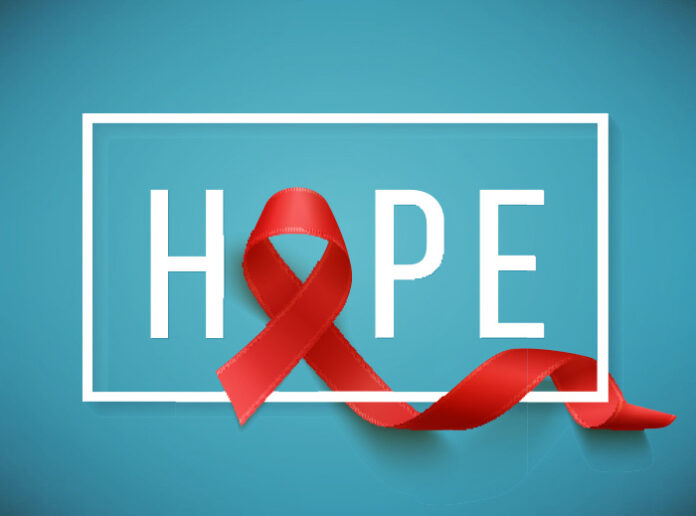Neue Studie zeigt zweiten Fall erfolgreicher HIV-Remission nach Knochenmarktransplantation
Mindestens eine Million Menschen sterben jedes Jahr an HIV-bedingten Ursachen und fast 35 Millionen leben mit HIV. HIV-1 (Human Immunodeficiency Virus) ist weltweit für die meisten HIV-Infektionen verantwortlich und wird durch direkten Kontakt mit HIV-infizierten Körperflüssigkeiten übertragen. Das Virus greift und tötet wichtige infektionsbekämpfende Zellen unseres Immunsystems. Es gibt keine Heilung für HIV. Derzeit kann HIV nur mit Medikamenten behandelt werden, die die Fähigkeit haben, das HIV zu unterdrücken Virus. These drugs have to be taken life long and it is challenging plus a cost burden on the health system especially in low-and-middle-income countries. Only 59 percent of patients of HIV worldwide are receiving Antiretroviral therapy (ARV) and HIV virus is fast becoming resistant from many known drugs which itself is a major concern.
Knochenmarktransplantation (BMT) is a treatment used for leukemia, myeloma, lymphoma etc. Bone marrow, the soft tissue inside bones, makes blood-forming cells including the infection fighting white blood cells. A bone marrow transplant replaces unhealthy marrow with a healthy one. In the first case of successful HIV remission, an HIV-infected individual called ‘Berlin Patient’ who later revealed his name received a bone marrow transplant a decade ago when he was targeted to treat acute leukemia. He received two transplants along with total body irradiation which led to long-term HIV Remission.
In einer neuen Studie veröffentlicht in Natur led by UCL and Imperial College London, the only second person has been shown to experience sustained remission from HIV-1 after a bone marrow transplant and stoppage of treatment. The anonymous adult male patient from UK was diagnosed with HIV infection in 2003 and was on antiretroviral therapy treatment since 2012. He was subsequently diagnosed with Hodgkin’s Lymphoma in the same year and he underwent chemotherapy. In 2016, he was given stem cell transplant from a donor who carried a genetic mutation which prevents expression of a most commonly used HIV receptor protein called CCR5. Such a donor is resistant to HIV-1 strain of the virus which specifically uses CCR5 receptor and thus the virus now cannot enter host cells. Since chemotherapy kills cells which are dividing, HIV could be targeted. From this understanding if one’s immune cells are replaced by cells which do not have CCR5 receptor, HIV can be prevented from rebounding after the treatment.
Die Transplantation wurde mit geringfügigen Nebenwirkungen wie einer leichten Komplikation durchgeführt, die bei Transplantationen üblich ist, bei denen Immunzellen des Empfängers von Immunzellen des Spenders angegriffen werden. Die antiretrovirale Behandlung wurde 16 Monate nach der Transplantation fortgesetzt, bevor entschieden wurde, die Behandlung zu beenden, um die Remission von HIV-1 zu beurteilen. Danach blieb die Viruslast des Patienten weiterhin nicht nachweisbar. Der Patient blieb 18 Monate nach Unterbrechung der antiretroviralen Therapie in Remission, da die Immunzellen des Patienten nicht in der Lage waren, den entscheidenden CCR5-Rezeptor zu produzieren. Diese Gesamtdauer beträgt 35 Monate nach der Transplantation.
This is a second case of a patient exhibiting sustained remission of HIV-1 following a bone marrow transplant. One important difference in this second patient being that ‘Berlin Patient’ had received two transplants along with total body irradiation while this UK patient received only a single transplant and underwent less aggressive and lesser toxic approach of chemotherapy. Mild complications of similar nature were seen in both patients i.e. graft versus host disease. Achieving success in two different patients points towards developing strategies based on preventing CCR5 expression which might even cure HIV.
Authors state that they are monitoring the patient’s condition and cannot say with affirmation yet if he has been cured of HIV. This may not be a generalized appropriate treatment for HIV because of adverse effects and toxicity of chemotherapy. Also, bone-marrow transplants are expensive and carry risks. Nevertheless, it is a better approach with reduced intensity conditioning and no irradiation. Research could also focus on knocking out the CCR5 receptor using gene therapy in people with HIV.
***
{Sie können das ursprüngliche Forschungspapier lesen, indem Sie auf den unten angegebenen DOI-Link in der Liste der zitierten Quellen klicken}
Quelle (n)
1. Gupta RK et al. 2019. HIV-1-Remission nach CCR5Δ32/Δ32 hämatopoetischer Stammzelltransplantation. Natur. http://dx.doi.org/10.1038/s41586-019-1027-4
2. Hütter G. et al. 2009. Langzeitkontrolle von HIV durch CCR5 Delta32/Delta32 Stammzelltransplantation. N Engl J Med. 360. https://doi.org/10.1056/NEJMoa0802905
3. Brown TR 2015. Ich bin der Berliner Patient: Eine persönliche Reflexion“, AIDS-Forschung und menschliche Retroviren. 31(1). https://doi.org/10.1089/aid.2014.0224






































